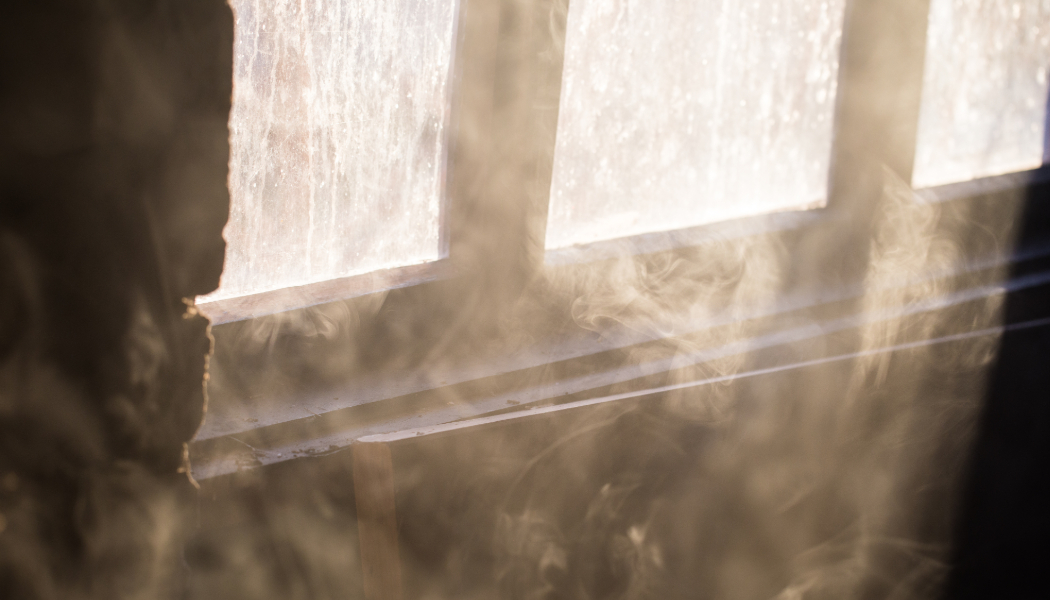Odors can range from mildly unpleasant to downright intolerable. They often indicate underlying issues that require immediate attention—not just for comfort but also for health and safety. Understanding the causes of odors, the potential damage they signify, and solutions like those offered by SteamMaster can empower homeowners and business operators to address these issues effectively.
Common Causes of Odors
- Water Intrusion and Microbial Growth
- Water intrusion into crawl spaces, basements, or other parts of a building often leads to musty, soil-like odors. This smell is caused by microbial growth, such as mold and mildew, which thrive in damp environments.
- These odors indicate the presence of fungal spores, which, under the right conditions (moisture, warmth, and food sources like organic material), can proliferate and pose serious health risks.
- Crawl Space Odors
- Crawl spaces are notorious for harboring moisture, leading to mold and mildew growth. The musty odor that emanates from these areas can travel through the home due to the stack effect—a phenomenon where warm air rises, pulling air (and odors) from lower levels, like crawl spaces.
- Trapped debris, rodent droppings, and decaying organic matter further compound the issue, contributing to foul smells.
- Dead Rodents and Critters in Crawl Spaces or Attics
- Decomposing remains of rodents, bats, or other critters in crawl spaces and attics release putrid odors. These trapped animals often go unnoticed until their decay produces strong smells.
- In such cases, inspection is critical to locate and remove the source.
- Indoor Air Quality and Accumulated Dirt
- Poor indoor air quality is often linked to accumulated dirt, debris, and particulates brought in by shoes or drafts. These particles include dust, skin flakes, and mold spores, which can emit odors and contribute to poor air circulation.
- Over time, the buildup of these materials can also create an ideal environment for microbial growth when combined with moisture.
- Sewer Backups and Water Damage
- Sewer backups or flooding can cause odors that are not only unpleasant but also hazardous. Sewage contains bacteria, viruses, and other pathogens that can lead to secondary damage and long-term health risks if not addressed promptly.
Health Risks from Odors
Odors aren’t just a nuisance; they can signal the presence of mycotoxins, volatile organic compounds (VOCs), and other harmful gases produced by microbial growth. These substances can exacerbate respiratory issues, allergies, and other health problems.
SteamMaster’s Solutions for Odor Removal
- Hydroxyl Generators
- How They Work: Hydroxyl generators use ultraviolet light and water vapor to create hydroxyl radicals, which neutralize odor-causing molecules, bacteria, and VOCs. Unlike ozone, hydroxyls are safe to use in occupied spaces, making them ideal for homes and businesses.
- Applications: Effective in addressing odors caused by fire, smoke, water damage, mold, and decomposition. Hydroxyls also sanitize the air, improving overall indoor air quality.
- Deep Cleaning and Vacuuming
- Regular Maintenance: Dirt, dust, and debris should be removed through regular vacuuming and biannual professional cleaning. SteamMaster offers deep cleaning services for carpets, upholstery, and hard surfaces, preventing particulate buildup that contributes to odors.
- Targeting Mold Spores: Mold spores can settle in carpets and HVAC systems. Professional cleaning and HEPA vacuuming can significantly reduce spore counts and associated odors.
- Crawl Space Encapsulation
- By sealing crawl spaces and using dehumidifiers, SteamMaster can eliminate moisture, preventing microbial growth and the associated musty odors.
- Mold Remediation
- SteamMaster follows industry-standard mold remediation protocols, removing contaminated materials and treating affected areas with antimicrobial solutions. This prevents mold regrowth and neutralizes odors at the source.
- Inspection and Removal of Decomposing Materials
- SteamMaster provides thorough inspections of crawl spaces, attics, and other areas to locate and remove the source of decay. This step is crucial for addressing odors from dead critters or trapped debris.
The Stack Effect and Its Role in Odor Spread
The stack effect is a natural phenomenon where warm air rises and escapes from the upper parts of a building, pulling in cooler air (and odors) from crawl spaces, basements, or other lower areas. This effect makes it critical to address odors at their source, as they can spread throughout the building and degrade indoor air quality.
Importance of Proactive Maintenance
- Biannual Cleaning
- A thorough cleaning schedule prevents the buildup of dirt, mold spores, and debris that contribute to odors. This is especially important in high-traffic areas or homes with pets.
- Moisture Management
- Prevent water damage by addressing leaks, improving drainage, and maintaining HVAC systems. Regular inspections can identify potential problems before they escalate.
- Sewer and Water Damage Mitigation
- Prompt response to water damage, including drying and disinfecting affected areas, prevents secondary damage and the development of odors.
Resources for Further Information
By understanding the causes of odors and taking proactive measures, homeowners and business operators can maintain a clean, healthy environment. SteamMaster is equipped with the expertise and technology to address all types of odor issues, ensuring that your space is both comfortable and safe. For assistance, call 970.827.5555 or email info@steammaster.com today!

